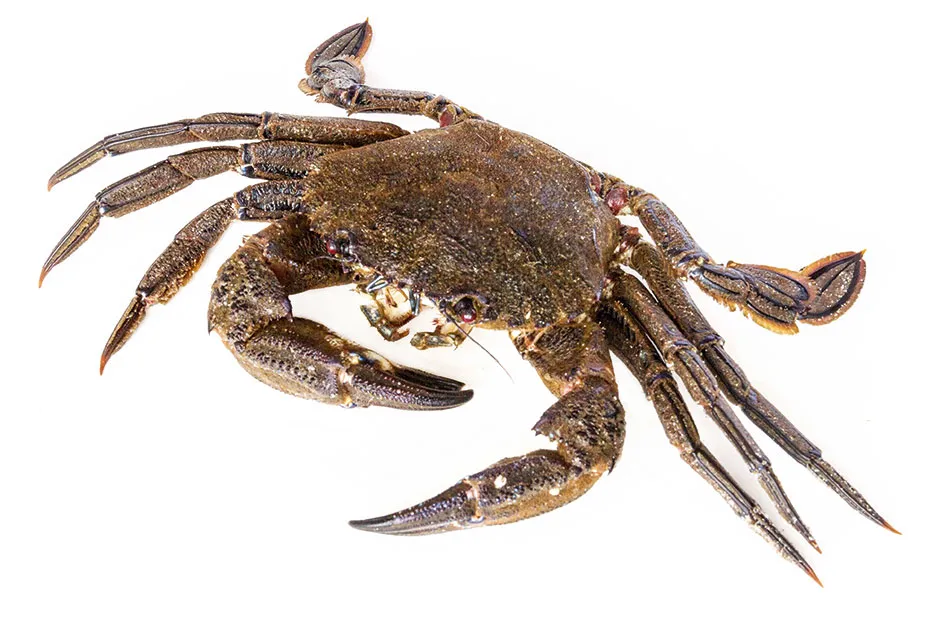Rockpooling is a fantastic activity that people of all ages can enjoy. Summer is a great time to visit the coast to take full advantage of the British coastline. Leaning over the small pools of water that form on the rocky shoreline, you can find a huge range of creatures that you might otherwise never know were there.
The seas around the UK have the potential to be amongst the most productive and wildlife-rich on earth. Hidden beneath the surface are landscapes every bit as varied and beautiful as those we see on land, with undersea cliffs, caves, chasms, mountains, dunes and plains. But it is not until the waves have retreated and the tide is low that we get a glimpse of this mysterious world and the weird and wonderful wildlife that inhabits it.
Here is our selection of the best rockpools in Britain, including all the essential equipment you'll need for a successful day of rockpooling.
Fancy a day on the beach? We have also rounded up some of the best beaches in the UK, including the best family-friendly beaches.
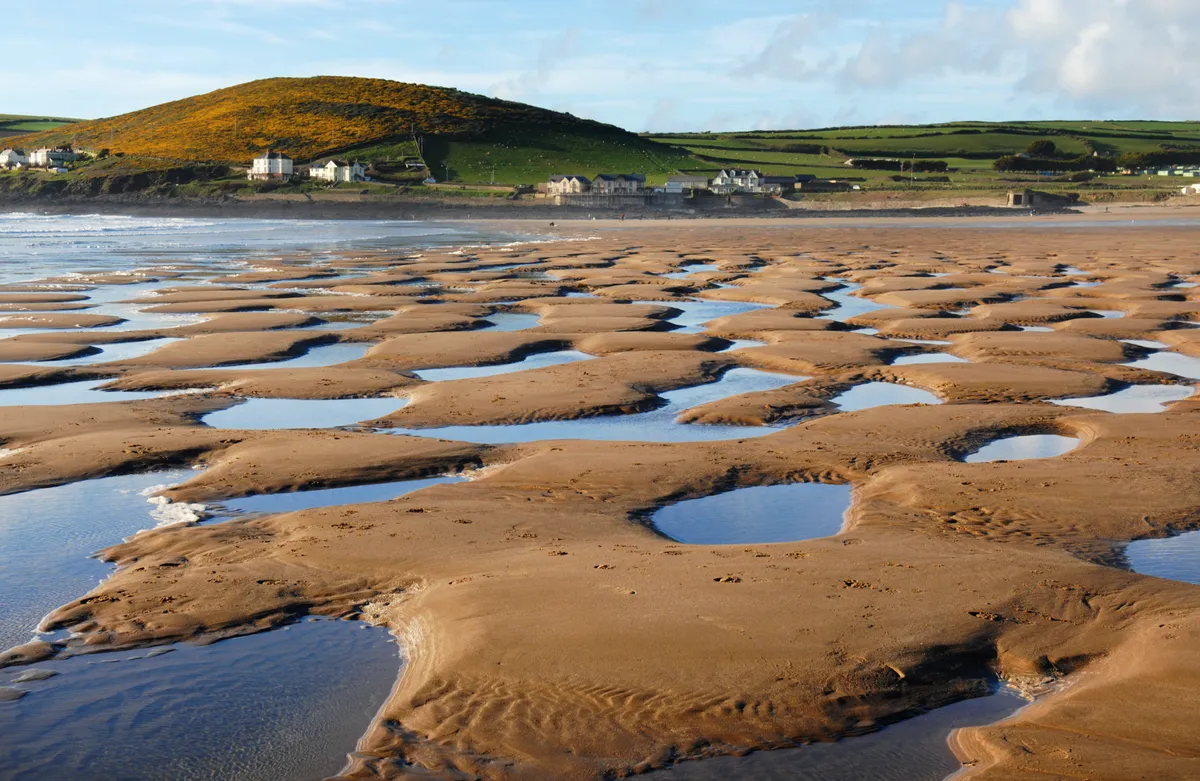
How to go rockpooling
Slowly submerge a bucket into the water and see what's inside when you pull it back up again. Once you're done observing, slowly push the bucket back into the water, returning the creatures to their home. Nets aren't recommended when rockpooling as most of the creatures are small and getting stuck in the net which can seriously harm them.
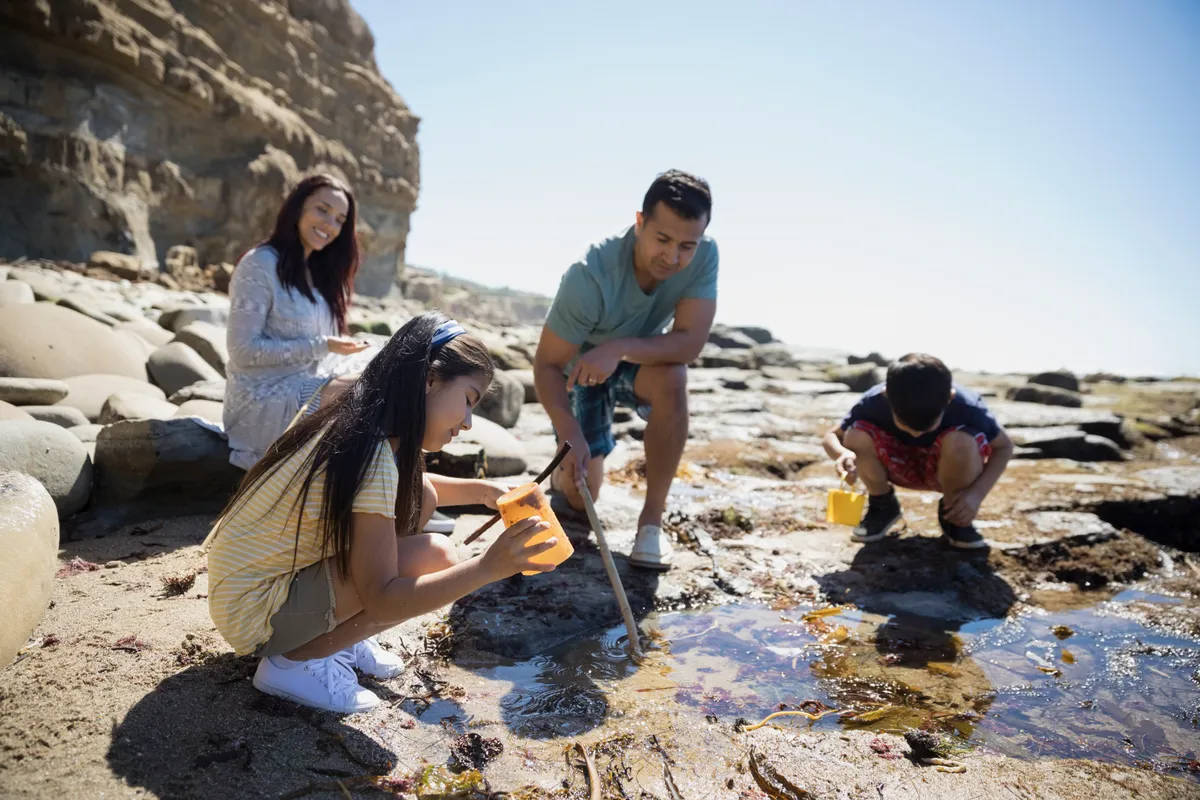
You need to get stuck in to have the best chance of spotting something. Pick up rocks to see if there's a crab underneath. Inspect seaweed to try and find what creatures are living within in it.
Investigate crevices in the rocks to find shellfish, but make sure you return them once you've observed them.
Where to go rockpooling
The best places to find interesting creatures are fairly sheltered rocky shores, on shingle or sandy beaches. You could also search around boulders, piers and pontoons which often contain interesting nooks and crannies for wildlife to hide in.
Spring tides are best as they reveal the very best pools and the best wildlife – species which you normally only find underwater, such as lobsters, spider crabs and small fish. Here are some of the best spots for rockpooling in the UK:
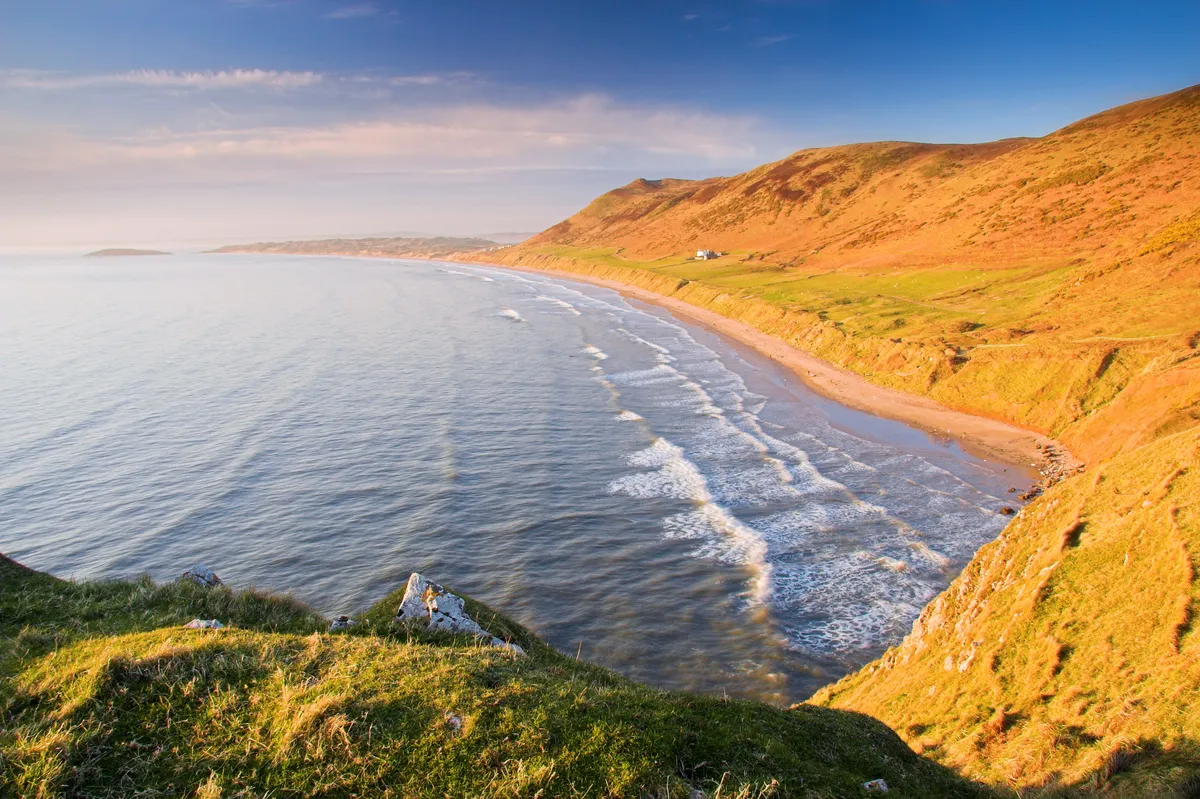
Best places to go rockpooling in the UK
Wembury, Plymouth
Bill Oddie voted Wembury his top spot for rockpooling in the UK – and it’s easy to see why. Look out for the intriguing beadlet anemones, which reproduce by spitting out perfect baby anemones that float around until they find a rock to attach to; cushion starfish, which feed by pushing out their stomachs through their mouths to engulf food.
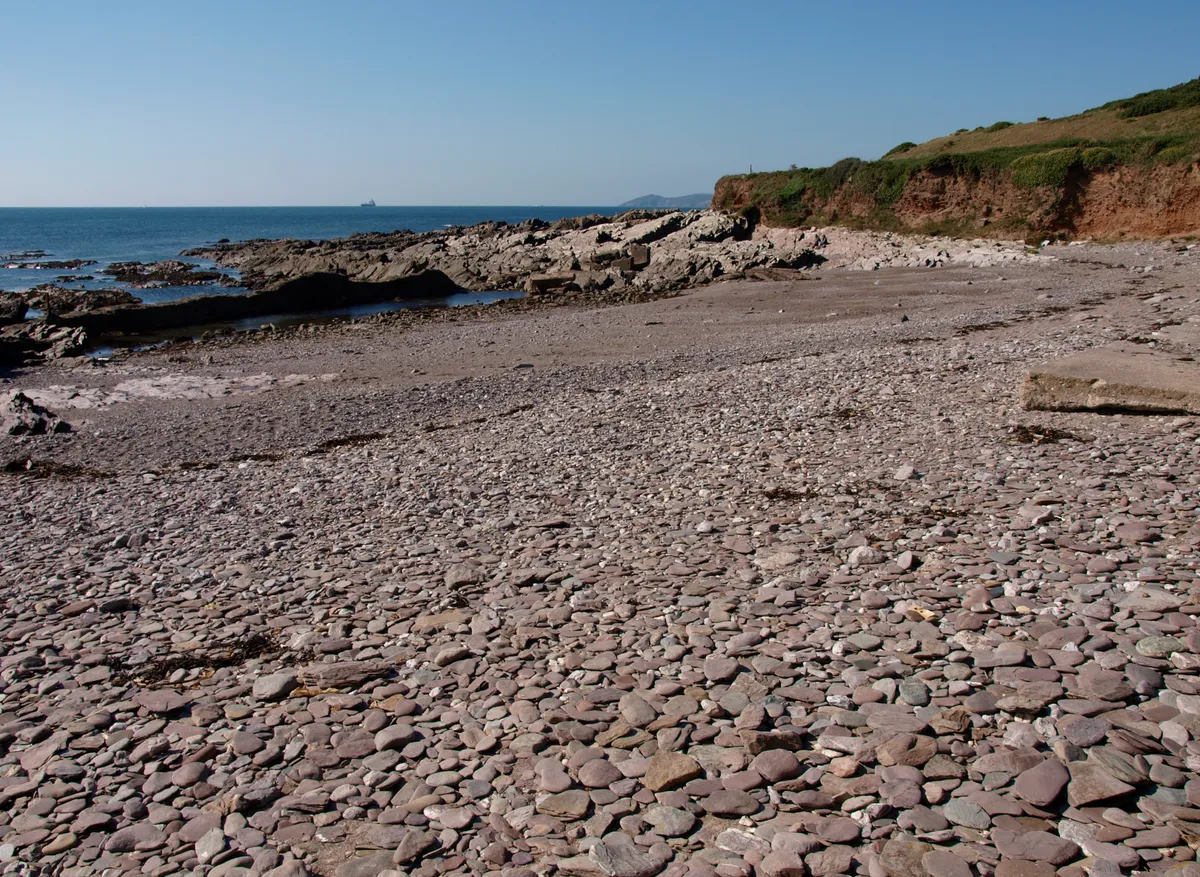
Rhossili Bay, Gower
If you fancy getting more than your feet wet in Britain’s rockpools, just around the corner from the Gower you’ll find a perfectly round, deep plunge pool. Nearby, you can explore a series of sea arches called the Three Chimneys as well as ancient caves that reportedly contain gold coins from a Portuguese wreck.

The Brough of Birsay, off the coast of Orkney
The Brough of Birsay is a small island off the Orkney mainland, scattered with the remains of Pictish and Norse settlements. Low tide exposes a causeway to the island, along with a medley of rockpools. Keep your eyes peeled and your buckets ready, as you’re likely to find the popular groatie buckies (cowrie shells), starfish, anemones and crabs.

Hope Gap, Sussex
Beneath the chalky face of the Seven Sisters, Hope Gap offers plenty of rewards for rockpoolers. It’s also beautifully eerie at sunset, when the moon-like landscape turns pink in the changing light. Watch out for strawberry anemones, with speckled spots like berry pips, and velvet swimming crabs, which have paddle-like hind legs to scull away from predators.

Treyarnon Cove, Cornwall
When the tide draws out on Treyarnon Cove on the Cornish coast, it reveals a natural tidal pool that’s 9m long and 2.5m deep in the centre. Snorkelling in this renowned swimming spot, formed with a little help from a concrete dam at one end, provides an alternative perspective on the marine life within.
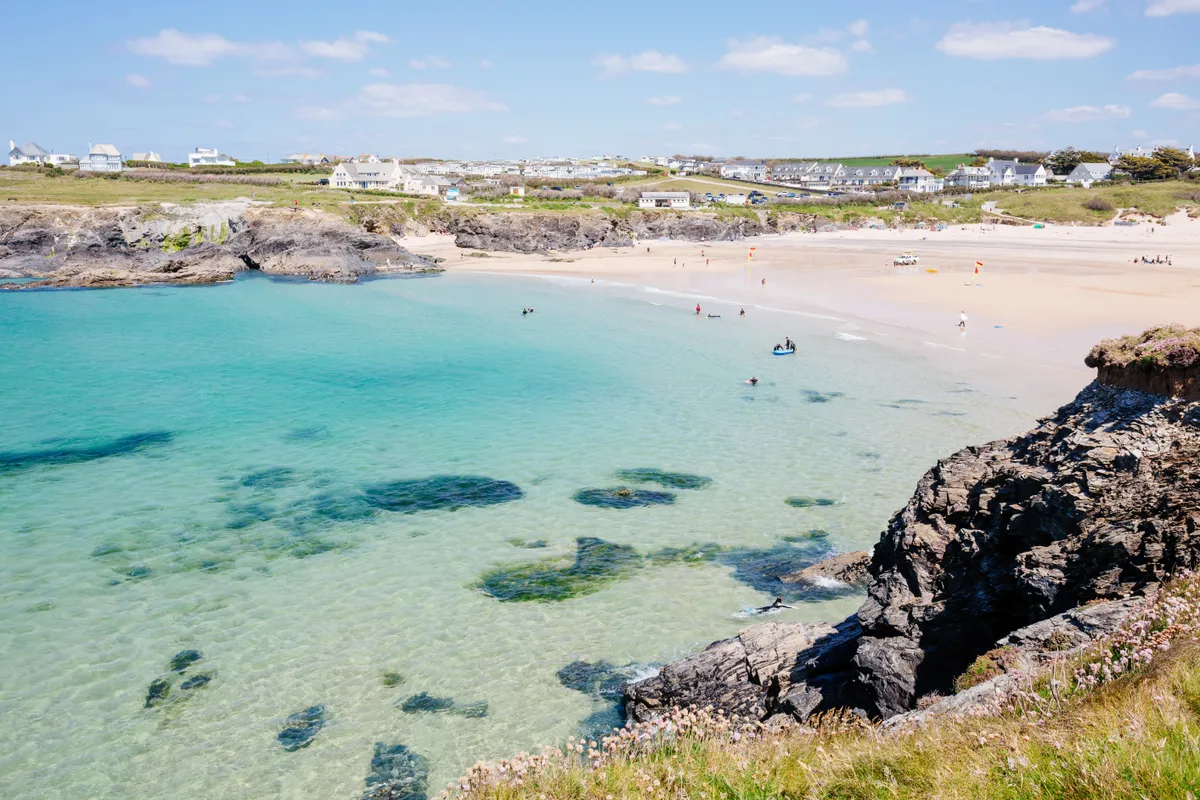
What to look out for when rockpooling
Wildlife including crabs, shrimps, anemones, limpets, snails and starfish can all commonly be seen in rockpools around the coast.
Highlights of a good day out can include a mermaid’s purse (dogfish eggs that are like a tiny womb – hold them up to the light and you can see the developing embryo inside), squat lobsters and crabs hiding under rocks, common prawns darting about in the open water, blennies changing colour to match their background, cushion stars and starfish.
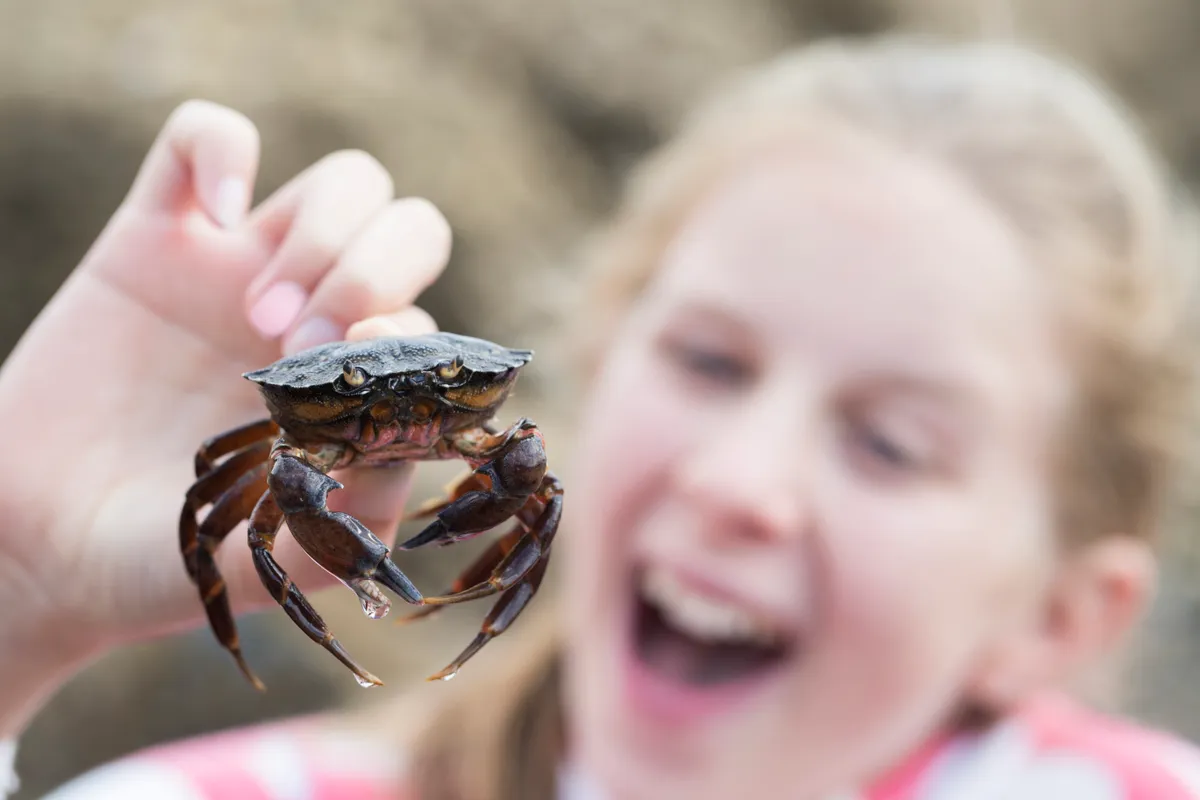
Beautiful beadlet anemones can only feed when their entire body is covered by water. Find one and watch it feeding – you may even tempt it if you dangle a bit of bacon in front of it. Then there’s the aptly named butterfish, found under rocks and seaweed, which is very slippery and a difficult one to catch. Look for limpets that are underwater and see if they have moved from their mark on the rocks to feed on the surrounding algae.
Also keep a lookout for dogwhelks near mussels and check the mussels for holes – this is how the whelks feed, by drilling a hole in the mussel shell and sucking out the contents.
What species can I see in rockpools?
Hermit Crab Pagurus bernhardus
This soft-bodied crab lives in an empty spiral shell, moving up sizes as it grows. When inside, its right pincer seals the entrance.
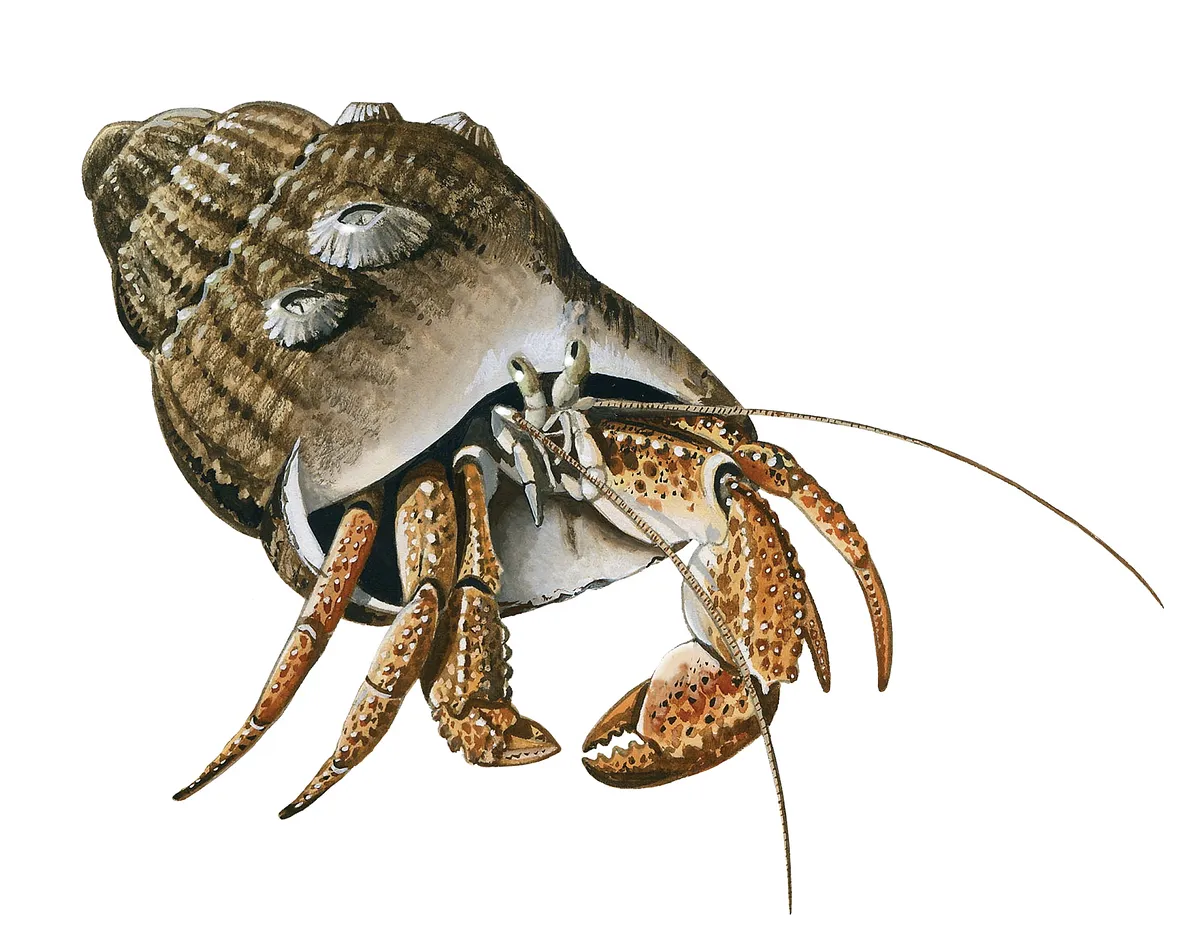
Common Starfish Asterias rubens
Although the common starfish is usually orange in colour, it can also be brownish or purple. It is instantly recognisable from its five-armed shape, with some individuals having six arms. Starfish can regenerate missing arms – in fact they can become whole again from just one arm and part of the central body! Average size is 20cm across. Learn more about starfish species found in the UK.

Shanny Lipophrys pholis
Britain’s most common blenny is often found in rockpools or under rocks on the shore line, and varies in colour from grey to brown. Up to 13cm (5in) long.
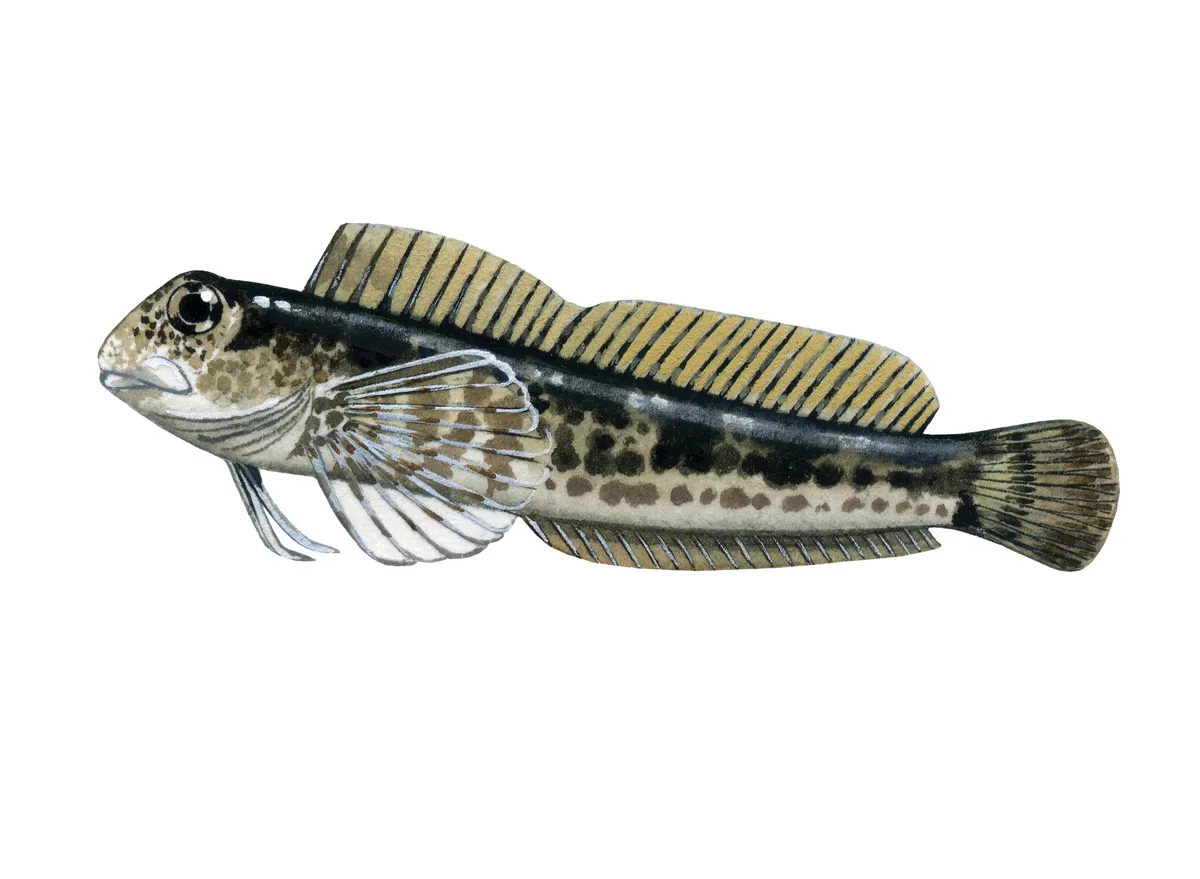
What equipment do you need for rockpooling?
Your bucket would ideally be transparent so you can can observe the critters closely from below. You can also use clear tupperware as an alternative.
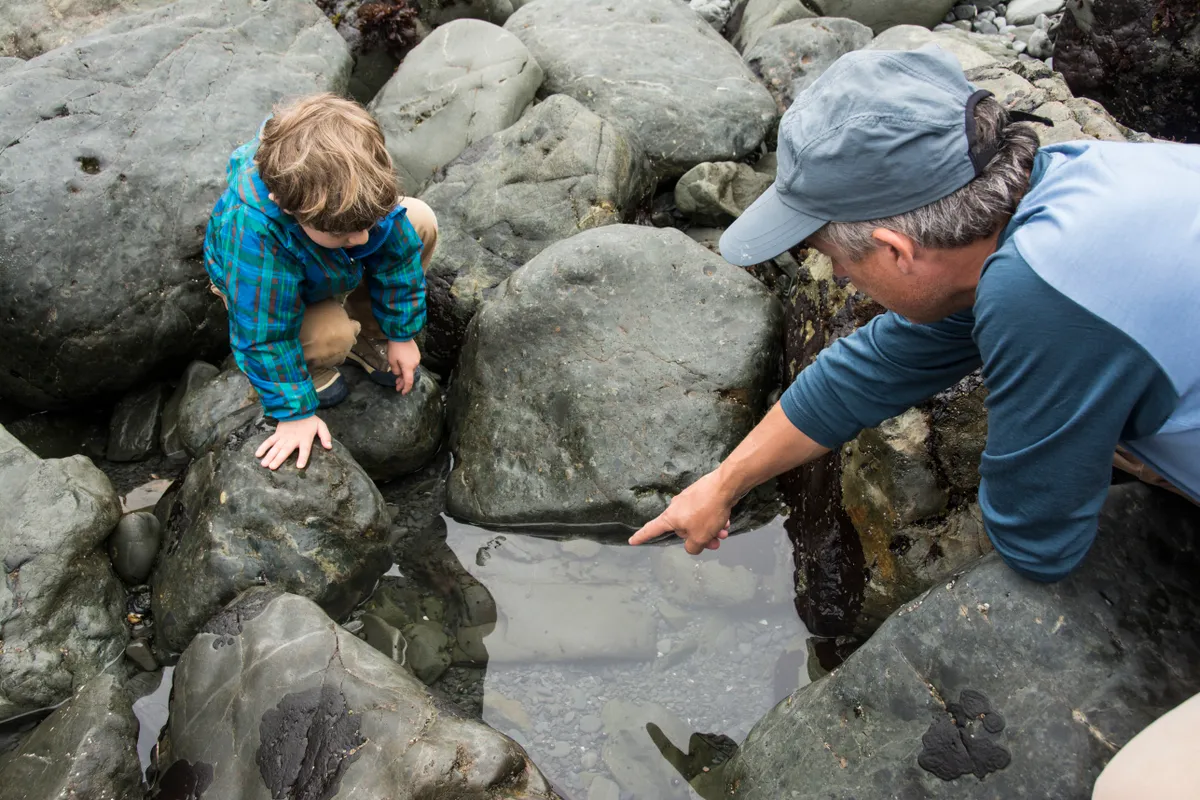
When searching for the best rockpool, you'll need a sturdy pair of waterproof shoes as the rocks will inevitably be slippery, sharp and therefore very dangerous.
If you're lucky enough to be rockpooling beneath beaming sunshine, make sure you wearing sufficient sun-cream and a hat in order to avoid sunburn.
How to go crabbing
1
Find an easily accessible rockpool
It needs to be full of sea creatures and safe for you to visit. Children will love scrambling over rocks and gazing in pools but take note of incoming tides.
2
Gather your equipment
You will need: some string or handline, a bucket, a small fishing net, an old washing tablet bag and the bait – crabs are particular to fish and bacon.
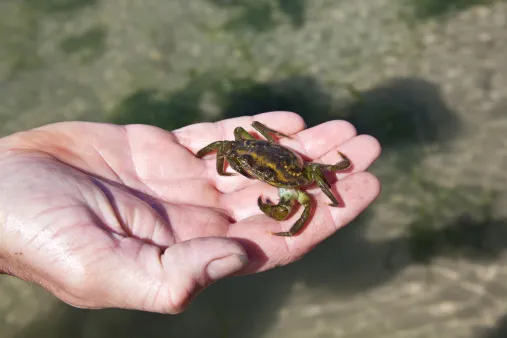
3
Fill a bucket
Before you begin crabbing, fill the bucket with seawater, seaweed and some pebbles - this helps mimic a crab's natural environment and relieves stress. Then put the bait in the old washing tablet bag and tie it to the string. Then simply drop the bait into the water and let it hit the seabed. It’s a good idea to wrap a little bit of the line loosely around your finger so that you can feel the crabs pulling on it.
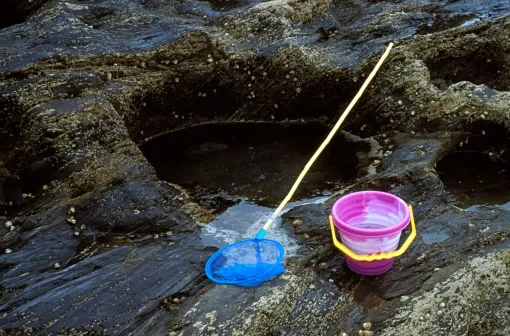
4
Wait for a crab to nibble
When you feel the crabs nibble, lift the line out of the water and put the net underneath so that it doesn’t fall back in. Then carefully place the crab in the bucket. Try not to have a gang of more then 10 in each bucket. Then see if you can identify all of the different crab species you've found.
5
Observe and then carefully release your crabs
Be careful when handling the crabs - if they pinch it is very hard to make them let go. If you do want to pick them up, make sure you hold the crab with your finger and thumb on either side of the shell, behind the pincers, so that they cannot reach you with them and so that you don’t hurt the crab, either. Once you've finished with your crabs, carefully release them back into the sea near the waters’ edge.
What crabs can I find in rockpools?
These characterful crustaceans are a highlight of any rock pooling expedition. Our expert crab and crustacean guide will help you identify common British crab species and the best places to find them.
Guide to Britain’s crab species: how to identify and where to find
